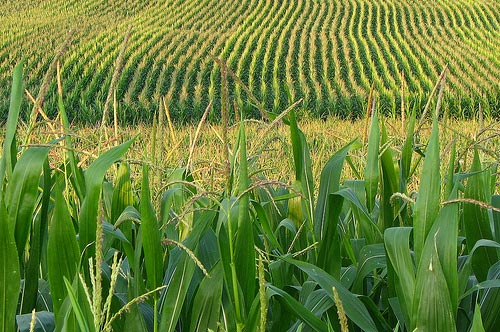by Carole Bartolotto, MA, RD
 Many years ago I decided to go to an Oriental Medicine Doctor. One of the first things he told me to do was to stop consuming dairy, which he said was linked to a number of health conditions. Reluctantly, I complied. After about 2 days without it, I noticed something miraculous: I could actually breathe when I woke up in the morning for the first time in my life. And that was it. I cut out dairy for good and have never looked back.
Many years ago I decided to go to an Oriental Medicine Doctor. One of the first things he told me to do was to stop consuming dairy, which he said was linked to a number of health conditions. Reluctantly, I complied. After about 2 days without it, I noticed something miraculous: I could actually breathe when I woke up in the morning for the first time in my life. And that was it. I cut out dairy for good and have never looked back.
Since I had such good results, I decided to take a closer look at the research related to dairy. And occasionally, I would tell patients to try cutting it out to see what benefits they might receive. In particular, I told people with irritable bowel syndrome (IBS) and sinus problems. One patient I saw had IBS. He told me he was committed to cutting out dairy for one month. I never saw him again but I did run into his doctor who said, “I don’t know that you did, but my patient is cured!”
How could something we grew up thinking was “nature’s perfect food,” actually turn out to be far from perfect? As a dietitian, I have been inundated with information and propaganda about dairy for years. However, as I started to read more independent research, I quickly realized dairy caused problems for a lot of people and may not be necessary for anyone at all.
So what are the issues with dairy?
- Lactose intolerance: Some people do not have the enzyme to break down milk sugar, so they get gas, bloating, cramps, and diarrhea. Certain ethnic groups such as Asians, blacks, and Native Americans have high rates of lactose intolerance.
- Sinus problems: Dr. Weil says you can see a dramatic improvement in sinus problems in two months by cutting out dairy. My improvement was practically overnight.
- Dairy is loaded with hormones. Even if you buy organic milk without recombinant bovine growth hormone (rBGH), it will still have high hormone levels. Why? Because dairy cows are almost always pregnant with lots of circulating hormones that pass to the milk. This is not good news considering that hormones have been linked with an increased risk of breast, prostate, and testicular cancer.
- Ovarian cancer: Some research has linked dairy with ovarian cancer. While more research is needed, some of the sugars found in milk may increase risk. One study found a higher risk in women who consumed the most lactose.
- Prostate cancer: Consuming too much calcium appears to increase the risk of prostate cancer. A Harvard study found that men were twice as likely to develop advanced prostate cancer if they drank two or more glasses of milk each day. Another study found that men who consumed 2,000 mg of calcium a day had double the risk compared to men consuming less than 500 mg per day. Until we know more, drinking a lot of milk or talking a lot of calcium is not a good idea for men.
Mark Bittman, a food writer for the New York Times, cut out dairy and his heartburn disappeared in just 24 hours. He wrote about his experience and received 1,300 responses from people reporting that eliminating dairy got rid of migraines, irritable bowel syndrome, colitis, eczema, heartburn, acne, hives, asthma, gall bladder issues, body aches, ear infections, colic, seasonal allergies, rhinitis, chronic sinus infections and canker sores.
So what does dairy have to offer?
- Calcium? You can get the equivalent amount of bioavailable calcium found in one glass of milk from 1¾ cups of kale, 1½ cups of bok choy, 2½ cups of broccoli, 1 cup of turnip greens, or just over ½ cup of calcium set tofu. And there are a lot of alternative milks such as almond or soy that are fortified with calcium.
- Protein? There are much healthier sources of protein such as beans, lentils, nuts, seeds, and veggies.
- Vitamin D? Sit in the sun, eat some salmon, or take a vitamin D supplement instead.
 The good news is that you can easily replace cow’s milk with almond, soy, rice, hemp, or coconut milk instead. I love Trader Joe’s Vanilla Almond Milk. Cheese is a bit harder to replace in terms of taste, but there are options out there. I really like cashew cheese. I make it by soaking cashews overnight and then blending them with a little water, salt, and lemon juice. There are soy cheeses and cheeses made with tapioca starch, rice, and almonds as well. Nutritional yeast is a nice option to have in place of Parmesan cheese.
The good news is that you can easily replace cow’s milk with almond, soy, rice, hemp, or coconut milk instead. I love Trader Joe’s Vanilla Almond Milk. Cheese is a bit harder to replace in terms of taste, but there are options out there. I really like cashew cheese. I make it by soaking cashews overnight and then blending them with a little water, salt, and lemon juice. There are soy cheeses and cheeses made with tapioca starch, rice, and almonds as well. Nutritional yeast is a nice option to have in place of Parmesan cheese.
Why not try cutting dairy out for 30 days and see what happens? If you derive any benefit, please post a comment and let us know what happened!
________________
References:
http://www.hsph.harvard.edu/nutritionsource/calcium-full-story/
Copyright © 2013 Carole Bartolotto, MA, RD. All rights reserved.



